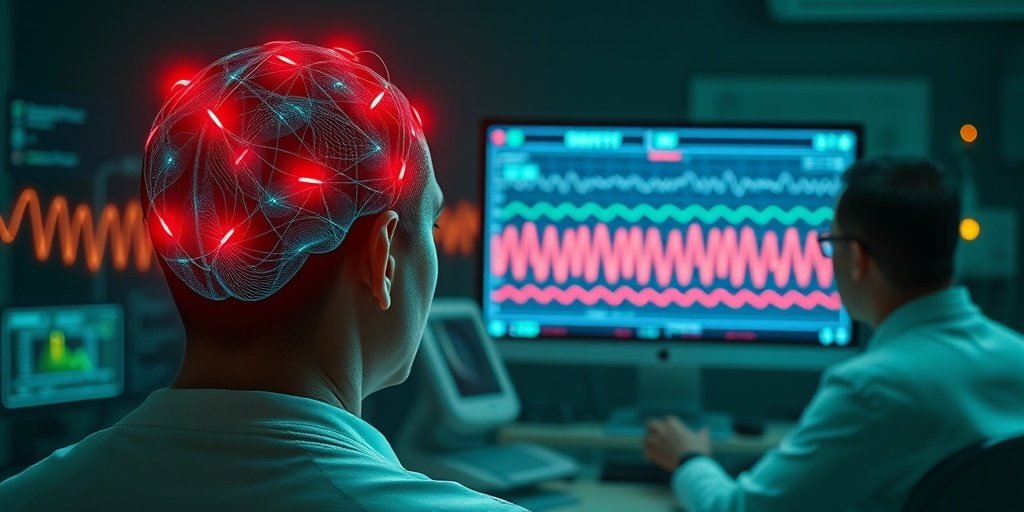⚡ Quick Summary
The study introduces AM-MTEEG, a novel multi-task EEG classification model that leverages deep learning and impulsive associative memory to enhance cross-subject EEG classification. Experimental results indicate that AM-MTEEG significantly improves average accuracy and reduces performance variance across subjects, showcasing its potential for healthcare applications.
🔍 Key Details
- 📊 Datasets: Two BCI competition datasets
- 🧩 Features used: EEG signals
- ⚙️ Technology: Deep learning-based convolutional and impulsive networks
- 🏆 Performance: Improved average accuracy over state-of-the-art methods
🔑 Key Takeaways
- 🧠 AM-MTEEG addresses cross-subject variability in EEG classification.
- 💡 Multi-task learning treats each subject’s EEG classification as an independent task.
- 🔍 Visualization of neuronal impulses reveals a precise mapping of neuron activities to movements.
- 📈 Reconstructed waveforms closely resemble real event-related potentials.
- 🌐 Potential applications in brain-computer interfaces for healthcare.
- 🤖 Hebbian learning is utilized in the bidirectional associative memory matrix.
- 🏅 Reduced performance variance across subjects enhances reliability.
- 📅 Published in: Frontiers in Neuroscience, 2025.

📚 Background
Electroencephalogram (EEG)-based brain-computer interfaces (BCIs) have emerged as a promising technology for various healthcare applications. However, challenges such as cross-subject variability and limited data availability have hindered their effectiveness. The need for robust classification models that can generalize across different subjects is critical for advancing BCI technology.
🗒️ Study
The study presents the development of AM-MTEEG, a multi-task classification model designed to improve EEG classification by integrating deep learning techniques with impulsive associative memory. The model treats the EEG classification of each subject as an independent task while leveraging common features across subjects, thus enhancing its applicability in real-world scenarios.
📈 Results
Experimental evaluations on two BCI competition datasets demonstrated that AM-MTEEG outperformed existing state-of-the-art methods, achieving a notable increase in average accuracy and a reduction in performance variance across subjects. The visualization of neuronal impulses within the model provided insights into the relationship between neuron activities and specific movements, further validating the model’s effectiveness.
🌍 Impact and Implications
The findings from this study have significant implications for the future of brain-computer interfaces in healthcare. By addressing the challenges of cross-subject variability and enhancing classification accuracy, AM-MTEEG could pave the way for more reliable and effective BCI applications. This advancement could lead to improved patient outcomes in various neurological and rehabilitation contexts.
🔮 Conclusion
The introduction of AM-MTEEG marks a significant step forward in the field of EEG classification. By utilizing innovative deep learning techniques and impulsive associative memory, this model not only improves classification accuracy but also enhances our understanding of brain activity. The potential applications of this research in healthcare are vast, and further exploration in this area is highly encouraged.
💬 Your comments
What are your thoughts on the advancements in EEG classification and their implications for healthcare? We would love to hear your insights! 💬 Join the conversation in the comments below or connect with us on social media:
AM-MTEEG: multi-task EEG classification based on impulsive associative memory.
Abstract
Electroencephalogram-based brain-computer interfaces (BCIs) hold promise for healthcare applications but are hindered by cross-subject variability and limited data. This article proposes a multi-task (MT) classification model, AM-MTEEG, which integrates deep learning-based convolutional and impulsive networks with bidirectional associative memory (AM) for cross-subject EEG classification. AM-MTEEG deals with the EEG classification of each subject as an independent task and utilizes common features across subjects. The model is built with a convolutional encoder-decoder and a population of impulsive neurons to extract shared features across subjects, as well as a Hebbian-learned bidirectional associative memory matrix to classify EEG within one subject. Experimental results on two BCI competition datasets demonstrate that AM-MTEEG improves average accuracy over state-of-the-art methods and reduces performance variance across subjects. Visualization of neuronal impulses in the bidirectional associative memory network reveal a precise mapping between hidden-layer neuron activities and specific movements. Given four motor imagery categories, the reconstructed waveforms resemble the real event-related potentials, highlighting the biological interpretability of the model beyond classification.
Author: [‘Li J’, ‘Hu B’, ‘Guan ZH’]
Journal: Front Neurosci
Citation: Li J, et al. AM-MTEEG: multi-task EEG classification based on impulsive associative memory. AM-MTEEG: multi-task EEG classification based on impulsive associative memory. 2025; 19:1557287. doi: 10.3389/fnins.2025.1557287